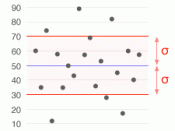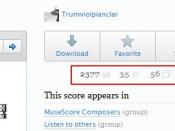Data Analysis: Baseball ERAThe problem to be examined will be whether or not teams that have above average ERAs (above the mean) will be able to win as many games as teams with lower than average ERAs (below the mean). The form for the hypothesis chosen was two-tailed hypothesis, and it states:Two-tailed hypothesisNull Hypothesis:(verbal form)Ho: No statistically significant difference in the mean wins between teams that have ERAs below the mean and teams that have ERAs above the mean.
(Numeric form)Ho: ü (ERA below mean) = ü (ERA above mean)Alternate Hypothesis:(verbal form)H1: A statistically significant difference exists in the mean wins between teams that have ERAs below the mean and teams that have ERAs above the mean.
(Numeric form)H1: ü (ERA below mean) â Ã¼ (ERA above mean)The outcome of the two-tailed hypotheses will be that Team A will either reject the null or fail to reject the null.
Four peer-reviewed research articles that are relevant to the research topic have been chosen and summarized as follows:Article 1: All Time Career Pitching Leaders provides information on the mean ERA of the all time leaders in both ERA and wins.
Article 2: Inside Dish provides news briefs relating to baseball in 2008.
Article 3: Pitching POWER discusses the importance of pitchers and ERA in general.
Article 4: The Influence of Salary Arbitration on Player Performance provides a study that used ERA and strikeout to walk ratios to determine a pitcher's effectiveness.
A sample size of 30 Major League Baseball teams from the Major League Baseball Data Set has been used for data hypothesis testing of the ERA and Wins for each team (Lind, et al, 2008). The actual population samples used for the research came from the sub data set X10: ERA (earned run average), within the Major League Baseball Data...


